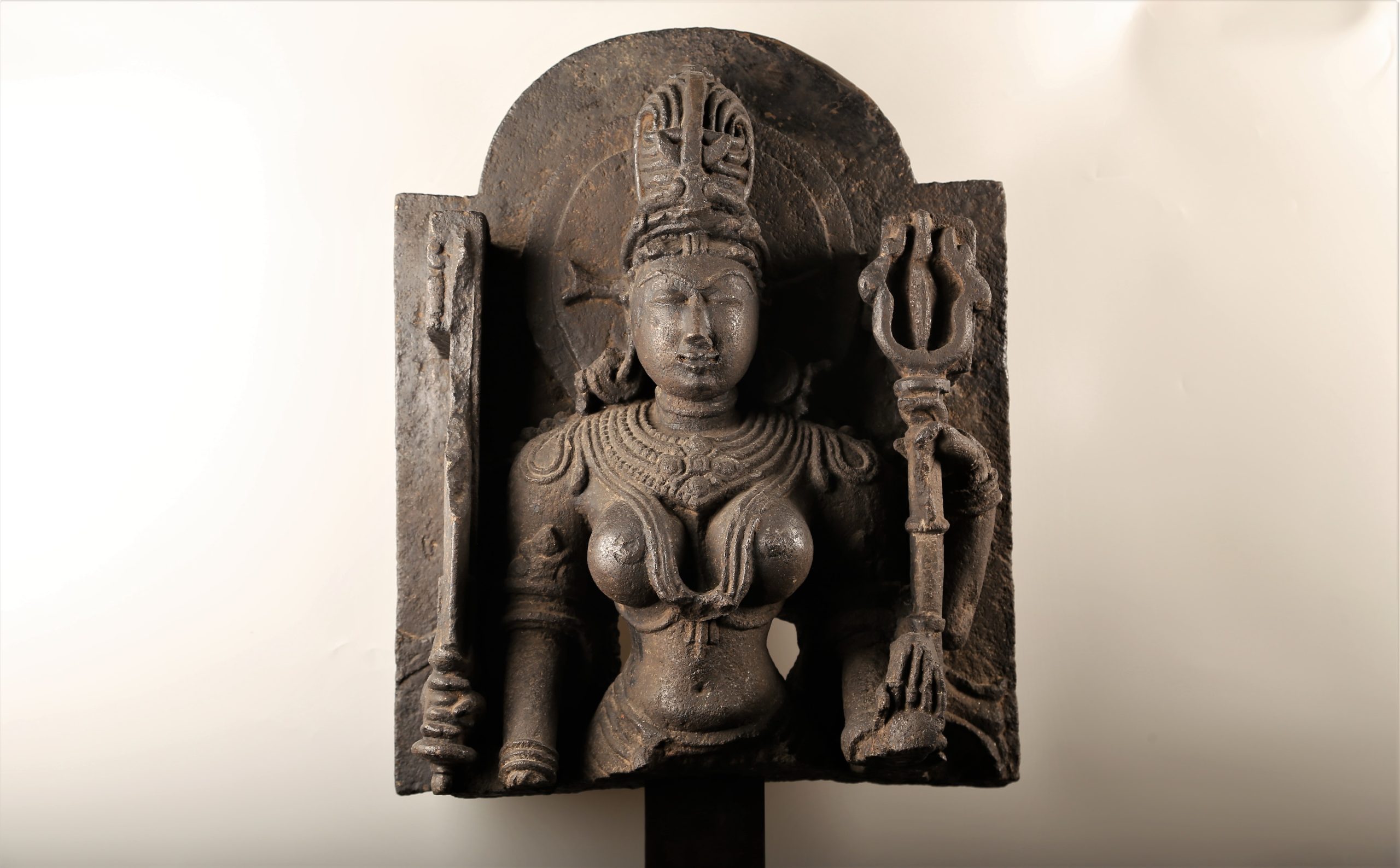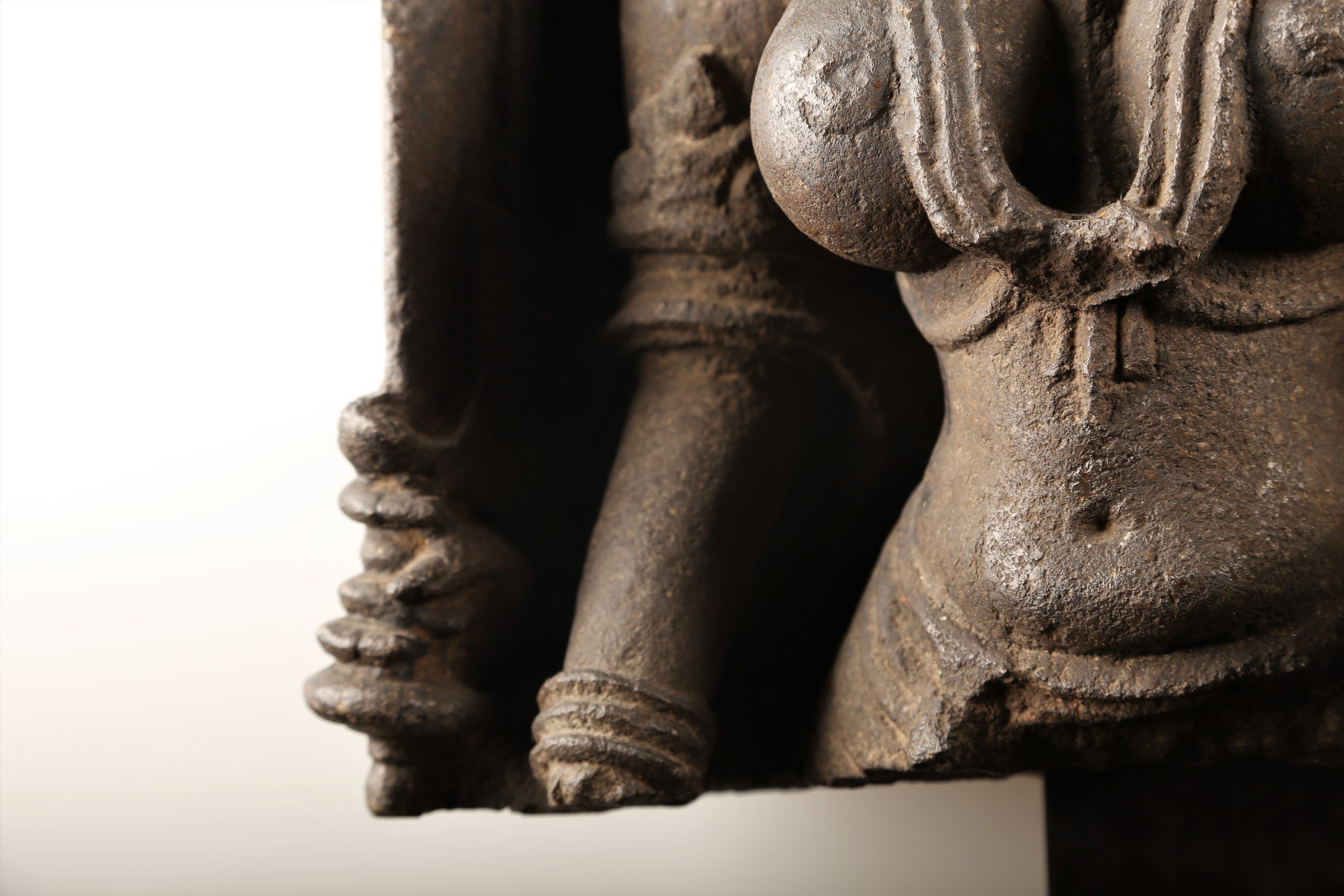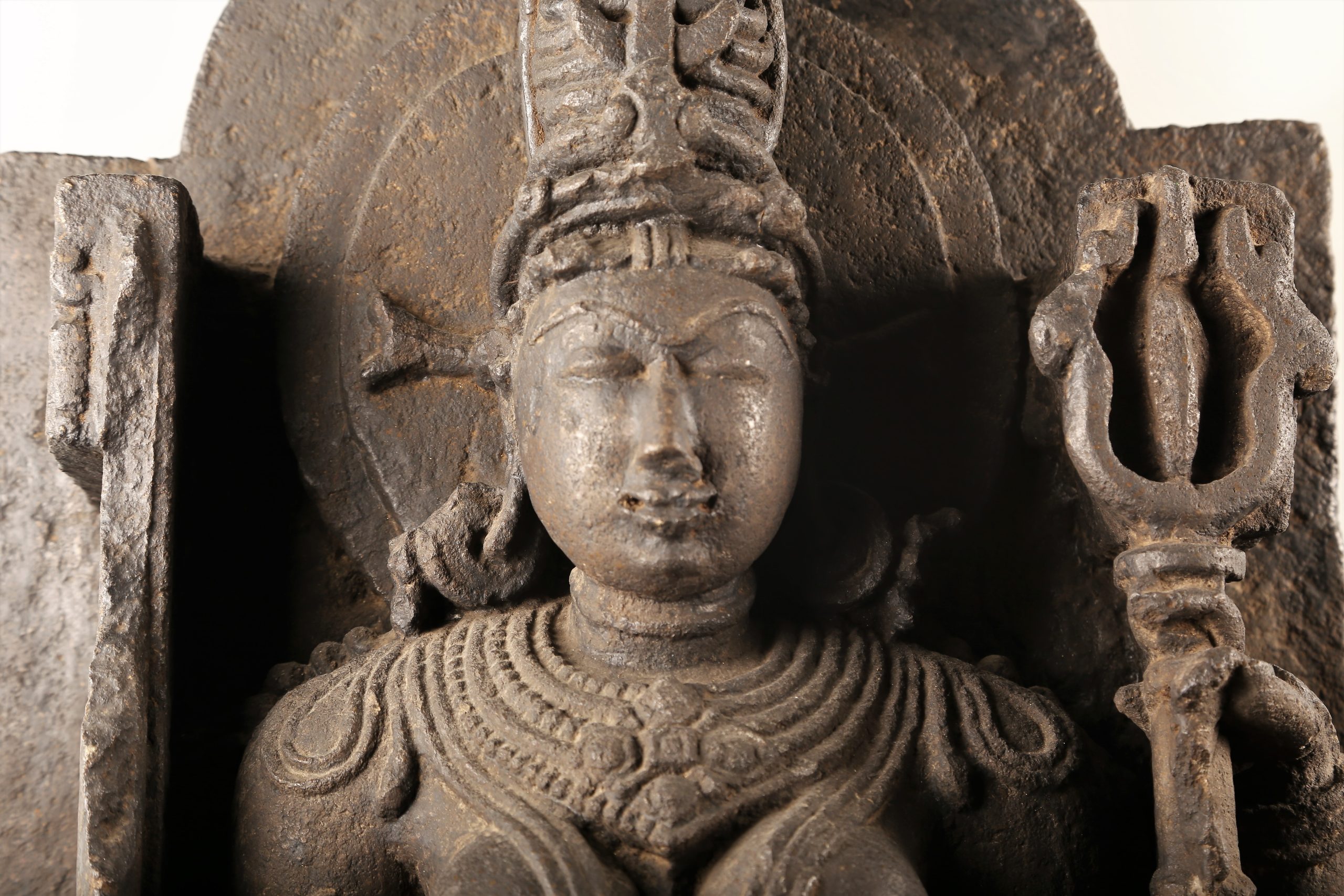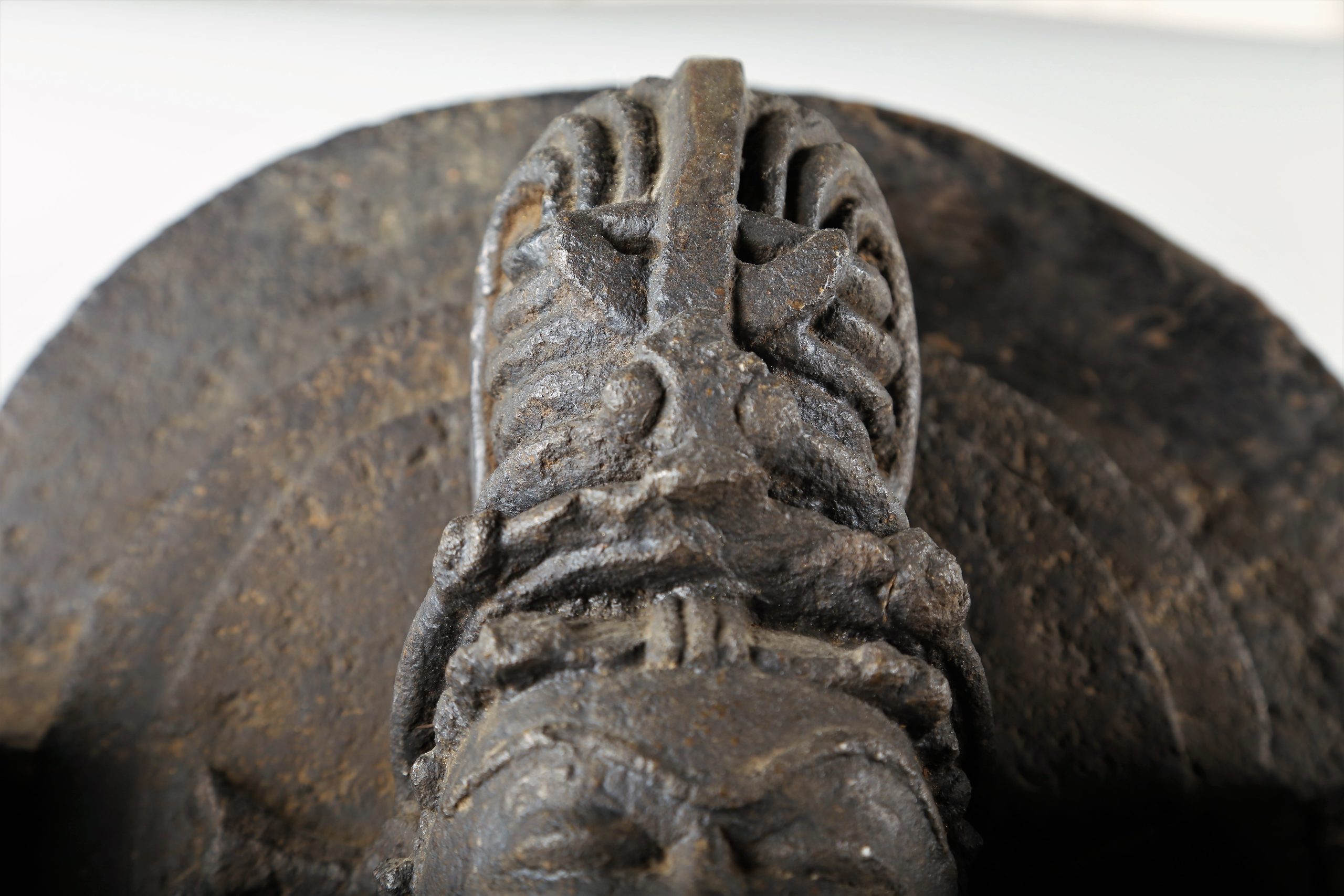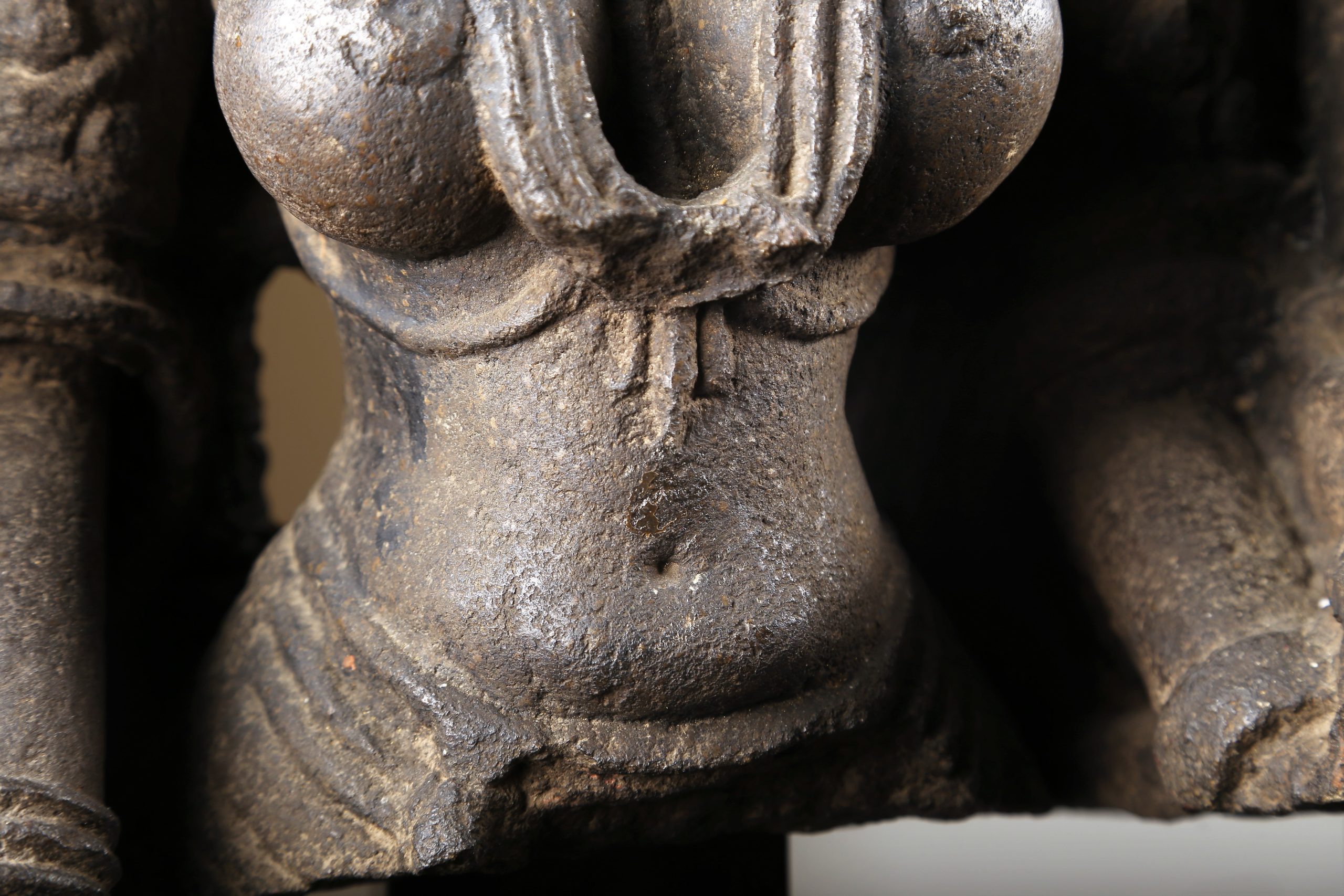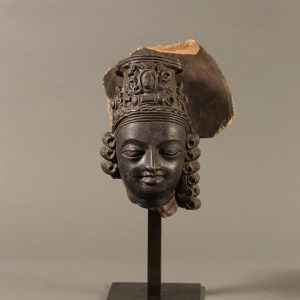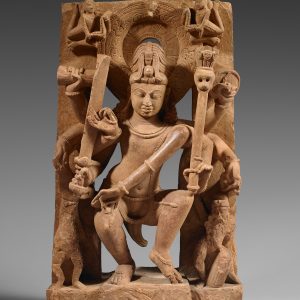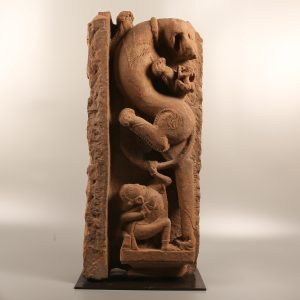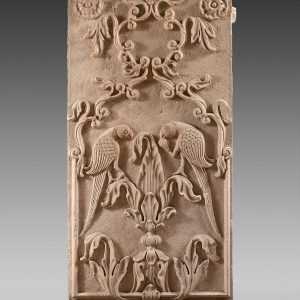Bust of Durga
Black stone
Western India, Gujarat (?)
12th century
H. 51.4 cm
Description
This black stone sculpture depicts a female deity in bust form, in a frontal position. The goddess, sculpted in high relief, stands out from an imposing architectural frame, her bare chest richly adorned with necklaces and bracelets. She is wearing a high bun made of multiple braids, which is similar to the ascetic’s bun, an iconographic element specific to representations of the god Śiva. This element, as well as the crescent moon that adorns this sophisticated hairstyle, in addition to the trident that the goddess holds in her upper left hand; indicates to us the Śivaitan cultic context in which the work was created.
An embodiment of the Indian art female canon in medieval times, in view of her supple plasticity and opulent bosom, the goddess nevertheless appears to be in a defiant attitude. Her frontal attitude, as well as the austere – almost cold – expression of her face, leads us to believe that she is the goddess Durga. Indeed, according to Hindu mythology, she is a goddess ready for battle. It is therefore common to find representations of the goddess riding a lion or overcoming a demon in India, sometimes in an attitude of extreme violence.
The slender goddess is depicted with four arms, and was originally meant to be standing, according to representations of Durga in her form as supreme goddess. She holds the trident in her upper left hand, while her lower hand makes the gesture of fearlessness (abhayamudra). On the right, her lower hand is lacunar, while the upper hand seems to be holding a sword, an attribute also characteristic of the goddess Durga.
The architectural structure that frames the sculpture, the use of black stone, as well as the very oval face, with its fine and stylised features, suggest that this is a sculpture from northwest India. More precisely, the dichotomy between the treatment of the flesh and the opulence of the ornaments brings this bust closer to Chalukya statuary, a younger branch of which ruled the Gujarat region between the 10th and 13th centuries, before the Muslim conquest. Chalukya art is thus illustrated by the finesse of the ornamentation, which is found here in the treatment of the jewellery and the bun.
Provenance : Private American collection, Parke-Bernet galleries, 1965.

